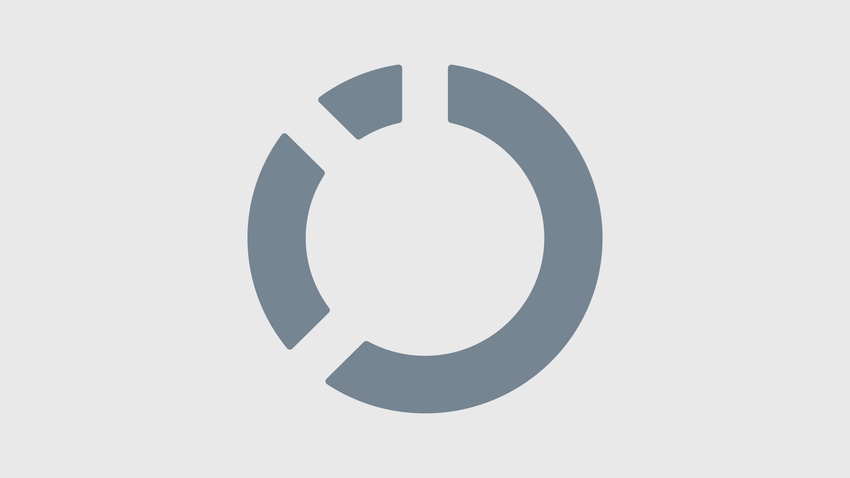Microsoft quietly slashed another $100 off the price of the original Surface Pro. Here's how it stacks up to the competition.


Microsoft Surface: 10 Best And Worst Changes
Microsoft Surface: 10 Best And Worst Changes (click image for larger view)
Visitors to Microsoft's website were greeted with a welcome surprise Thursday: The company quietly cut $100 from the cost of the original Surface Pro, bringing the 64-GB base model down to $699.
Microsoft's next-generation Surface Pro 2 went on sale Tuesday at a starting cost of $899. The company also made its $449 Windows RT-based Surface 2 available Tuesday, a day that also saw the introduction of new full-size tablets from Apple and Nokia. The original Surface Pro was previously discounted in August, when Microsoft slashed the starting cost from $899 to $799.
The new machines and discounted Surface Pro join a variety of recently announced tablets and laptops vying for buyers who need both portability and productivity from their devices. Is Microsoft's original Pro a bargain at its new price?
It just might be. I upgraded my Surface Pro to Windows 8.1 as soon as the update became available, and the changes translate to a surprisingly big difference. It's still easy to unintentionally open apps and hidden menus, and some tasks take longer than they did in Windows 7. But on the whole, the improved UI allows the desktop and Modern UI to more gracefully coexist, especially since users have more control over when and how Live Tiles appear. It doesn't hurt that the Live Tiles themselves are more customizable and that Microsoft's baked-in apps are substantially improved.
[ How does Microsoft's Surface 2 stack up against Apple's newest iPad? Read iPad Air Vs. Surface 2: 9 Considerations. ]
The update has happily unleashed power I didn't know the device had. Apps still crash occasionally, but I generally have to make a concerted effort to make the Pro stumble. Internet Explorer 11 has been able handle 100 tabs without breaking a sweat, as advertised. And even if an app becomes truly unruly, it takes less time to reboot a Surface Pro than it does to troubleshoot virtually any slowdown on my Windows 7 laptop, even though it's respectably equipped with a third-generation Intel i7 processor and loads of RAM.
Even so, the Surface Pro is heavy for a tablet, has a small screen for a laptop, and will cost more than $800 with a keyboard. Is it worth the investment? Here's how the discounted Surface Pro stacks up against the competition.
Against the Surface Pro 2:
The Surface Pro 2 beats the original Pro in every way, but with the $200 price difference taken into account, the margin is closer than it appears.
The Pro 2 has the same dimensions and weight as its predecessor, so the new model doesn't add much in terms of portability. Out-of-box, the Pro 2 offers seven hours of battery life to the Pro's four. But if you buy a Surface Pro and use the $200 you'll save on a Power Cover -- a keyboard accessory that will become available next year -- you'll be able to boost battery life to a more agreeable six hours.
The Pro 2 has a newer, faster Intel chip, though the original Pro packs enough processing muscle to satisfy many power users. The Pro 2 also comes with better perks, such as 200 GB of free SkyDrive storage for two years and a year of free Skype Wi-Fi. The Pro comes with only a one-month trial to Office 365. Both devices come with a stylus, however.
Against the Surface 2:
Unlike the Surface Pro, the $449 Surface 2 can't run desktop software. But on a device with a 10.6-inch screen, many desktop apps are of limited use. Adobe Lightroom runs quite well on a Surface Pro, but if I'm doing serious work, I'll move to a device with a bigger screen every time.
Beyond the desktop issue, Microsoft's newest ARM tablet has a number of appeals over the discounted Pro: It includes Office for free, comes with the same Skype and SkyDrive add-ins as the Surface Pro 2 and has a two-position kickstand. It also weighs less than 1.5 pounds and feels noticeably lighter than the 2-pound Pro models. At $250 less than the Surface Pro, the Surface 2 offers great build quality, 10-hour battery life, and everything you need for Web browsing, movies, social media and on-the-go productivity.
Still, the Pro packs substantially more power. The Surface 2 is a big upgrade from the original, but in a few days of testing I've found it relatively easy to overwhelm. It handles multitasking just fine and runs Office smoothly. Movies also look great on its 1080p screen. But whereas the Surface Pro is undaunted by legions of Internet Explorer tabs, the Surface 2 often hits its limit after only a dozen. The Pro's base configuration also packs double the memory: 64 GB to the Surface 2's 32 GB.
Against Other Windows 8.1 and Windows RT 8.1 tablets:
If an argument can be made for the Surface 2 over the Surface Pro, then the same argument can be made for Nokia's Windows RT 8.1-based Lumia 2520. At face value, the Lumia 2520 is a Surface 2 clone, though it offers the benefit of LTE support, which the Surface 2 won't gain until next year and which isn't available for either Pro. It will go on sale later this year for $499. A keyboard/cover accessory that includes two USB ports will cost $149 more.
Among Windows 8.1 tablets, Dell's Venue 11 Pro might be of particular interest to people considering the discounted Surface Pro. Dell's tablet features a 10.8-inch 1080p screen and will hit the market in November for $499. Like the Surface Pro, it runs the full version of Windows 8.1, including desktop apps. Dell also plans to match the Surface Pro's accessories with an optional keyboard and a docking station that will allow the Venue 11 to serve as a desktop replacement.
Still, the cheapest version of the Venue 11 uses Intel's newest Atom processor, which is fast but nowhere near as fast as the chips in the Surface Pro. The Venue can be configured around Intel's new Haswell chip, which also powers the Surface Pro 2, but Dell hasn't yet disclosed the prices of more robust configurations. It's not clear if comparably equipped Venue 11 tablets will undercut the discounted Surface Pro's pricing, though Dell's tablets should still offer better battery life. Against the iPad Air:
In some ways, it's silly to compare the iPad Air to the Surface Pro. Apple has defiantly kept its iPads separate from its MacBooks, and Microsoft prefers to call the Surface Pro an Ultrabook, not a tablet. As this branding differentiation suggests, whether you want an iPad or a Surface Pro depends a great deal on whether you want a superlative tablet with limited laptop functions or a highly portable laptop with modest tablet functions.
Nonetheless, when it becomes available in November, the 64-GB iPad Air will cost $699, same as the 64-GB Surface Pro. The devices share many functions and occupy similar price brackets, so as dissimilar as they are in certain respects, the iPad Air and Surface Pro are also destined to be compared.
For tablet use, the iPad Air offers superior ergonomics and ecosystem. The Surface Pro is arguably better suited to productivity tasks, and Microsoft's new Type Cover 2 and Touch Cover 2 keyboard covers are quite nice.
But studies suggest many people are content to use third-party keyboards with their iPads, a trend that Apple's free iWork apps can only encourage. Moreover, iPad productivity has as much to do with changing how and when people interact with data and the environment as it does sitting at a desk and typing on a keyboard. So whether the iPad Air or the Surface Pro is better for productivity really comes down to what kind of work you do, whether the iPad/Surface Pro is intended as a companion device or a primary device, and other matters of personal taste.
Against Laptops and Ultrabooks:
Compared to Windows 8.1 Ultrabooks and laptops, the Pro is relatively light and portable. It's rather heavy and thick for a tablet, but it's also more touch-friendly than most traditional clamshell designs (though there are arguable exceptions, such as Lenovo's Yoga). The Surface Pro might be more laptop than tablet, in other words, but if you want convergence, you're more likely to enjoy the Modern UI on a device like the Surface Pro than on a machine with a built-in keyboard.
But there are tradeoffs. Among Windows 8.1 Ultrabooks and laptops priced comparably to the Surface Pro, almost all have larger screens, meaning that users who prioritize desktop productivity over touch apps might be better served by the laptops.
Some potential Surface Pro buyers might also consider Apple's 11-inch MacBook Air. Starting at $999, it's only $100 more than a Surface Pro with Power Cover -- the only Surface Pro configuration that will give users anything close to the 11-inch MacBook Air's nine-hour battery life.
The Surface Pro has a nicer screen than the MacBook Air, as well as laptop-tablet hybridity. It's also slightly lighter. But for those who want a great laptop experience under $1,000, the Air's silky smooth multitouch trackpad, lightning-fast SSD drive and portable ergonomics have always been a compelling package. Now that iWork is included for free and OS X Mavericks makes it easy to sync files and settings between iPads and Macs, laptop-minded buyers might see the Air as more attractive still.
About the Author(s)
You May Also Like







